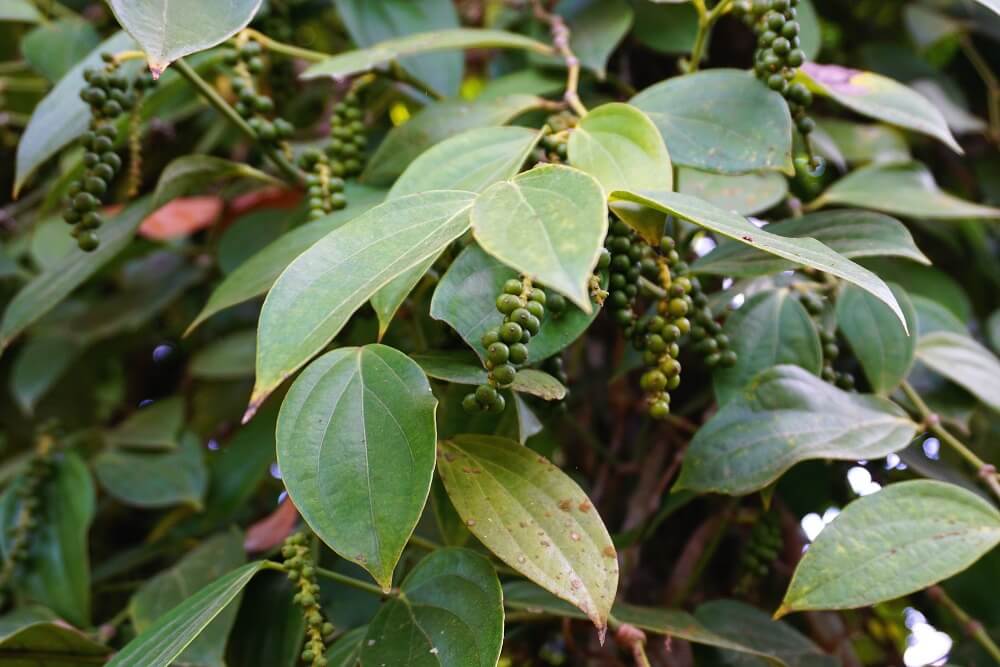
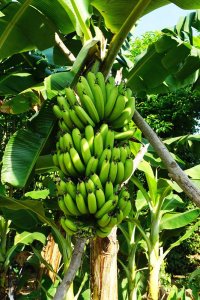
PHONG NHA, VIETNAM – During our recent visit to Phong Nha, we enjoyed an informative morning walk around the rural Farmstay Village.
As we walked, Phong Nha Farmstay co-owner Ben Mitchell shared some of the history of the village, the development of the various Farmstay enterprises over the last nine years and his vision for the future of the community-based businesses.
Ben pointed out some of the local crops, including bananas, peppercorns and cassava, which is grown for its edible roots. Originating in South America, the cassava plant grows well on almost any kind of soil, including poor quality terrain.
Cassava fed the troops during the war
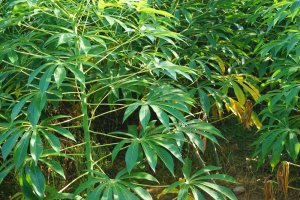
During the Vietnam/American War, Ben told us, the North Vietnamese Army sent villagers out into the countryside to plant cassava. Then when the army moved through the area six months later, there was a ready food source to supply the advancing troops.
We also saw a lot of black pepper growing throughout the village. The pepper crop is just one of a handful of sustainable local enterprises supported by the Farmstay.
Where does black pepper come from?
I had been curious about where exactly black pepper comes from. I knew the powdered spice we shake on our food is ground from small round peppercorns (who hasn’t seen a pepper mill?), but I wondered, “How do they grow? On a bush? A vine? A tree?”
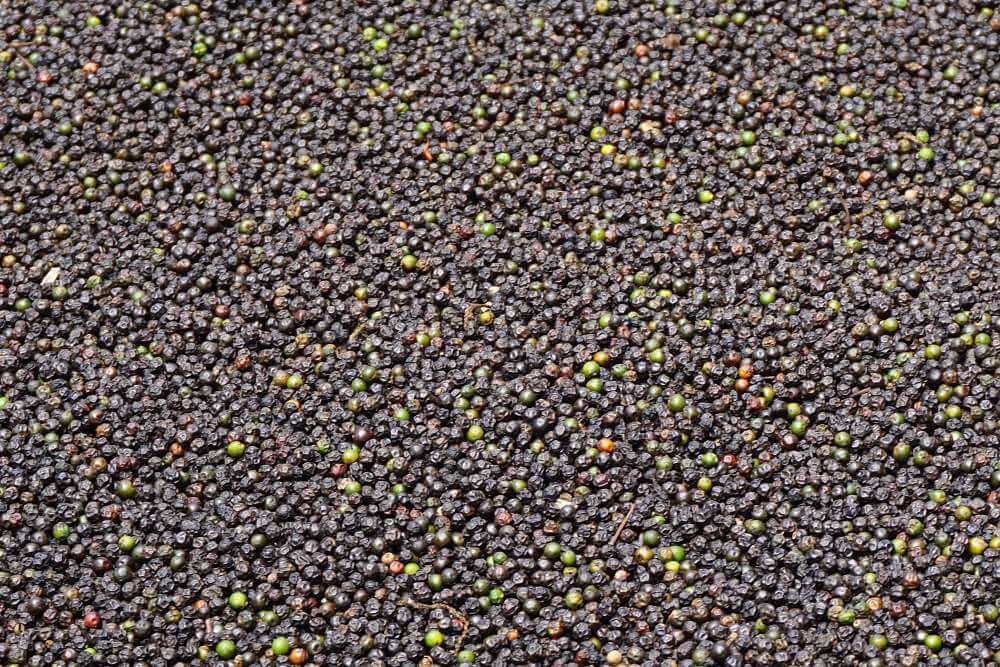
It turns out they grow on trees… sort of…
Peppercorns actually grow on perennial vines. And around the Farmstay Village, the vines grow on trees.
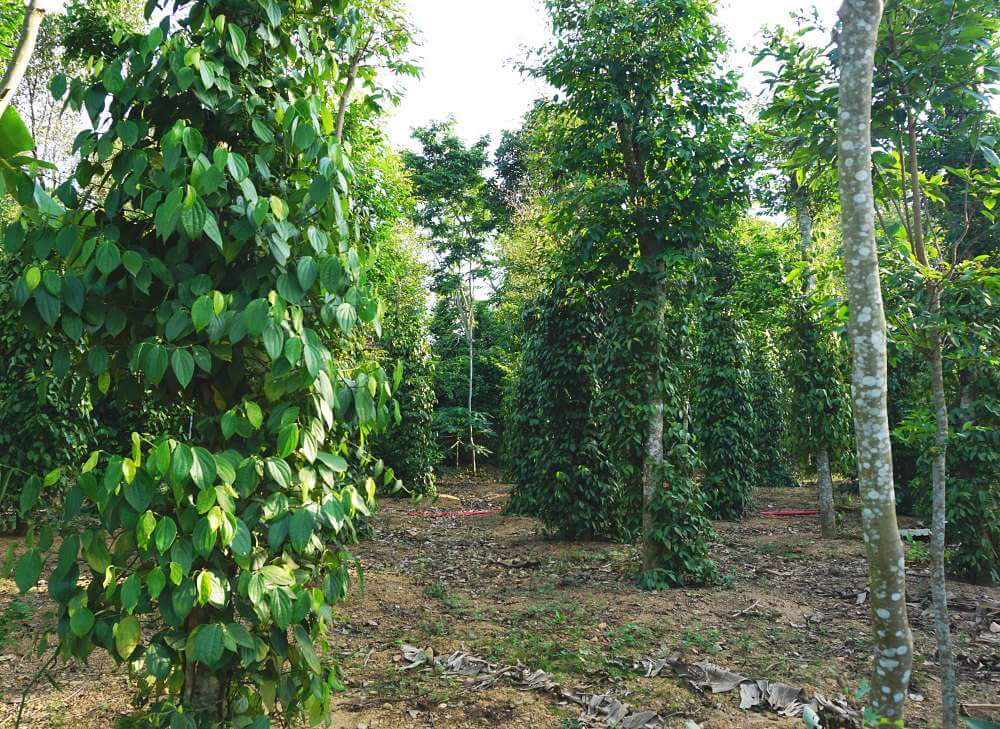
As we walked, Ben pointed out several plots of land dedicated to growing peppercorns. All the plots had 20-foot-tall trees planted in an irregular grid, with dark green peppercorn vines curling up the trunks.
The reason for growing the vines on live trees instead of a wooden trellis is about the tropical environment, according to Ben.
‘A wooden post will be gone in a year’
“If you put up a wooden post in this climate, it will rot and be gone in a year,” said Ben. “But if you plant a tree, it will just keep on growing. It acts as a living trellis.”
Most of the peppercorn vines we passed on our walk had been recently harvested. But when we came to a plot where the harvest was still in progress, Ben plucked a stem from one of the vines and offered us samples of the still green peppercorns.
Yow! I chewed the pea-sized pellet for a few seconds and spit it out, quickly dowsing my burning tongue with a long pull from my water bottle. Even in its unprocessed state black pepper is surprisingly hot.
Peppercorns are spread in the sun to dry
After the harvest, the peppercorns are stripped from their stems and spread out in the sun to dry. It takes just a few days in the tropical heat, though occasional thunderstorms sometimes make it necessary to move the harvest under cover.
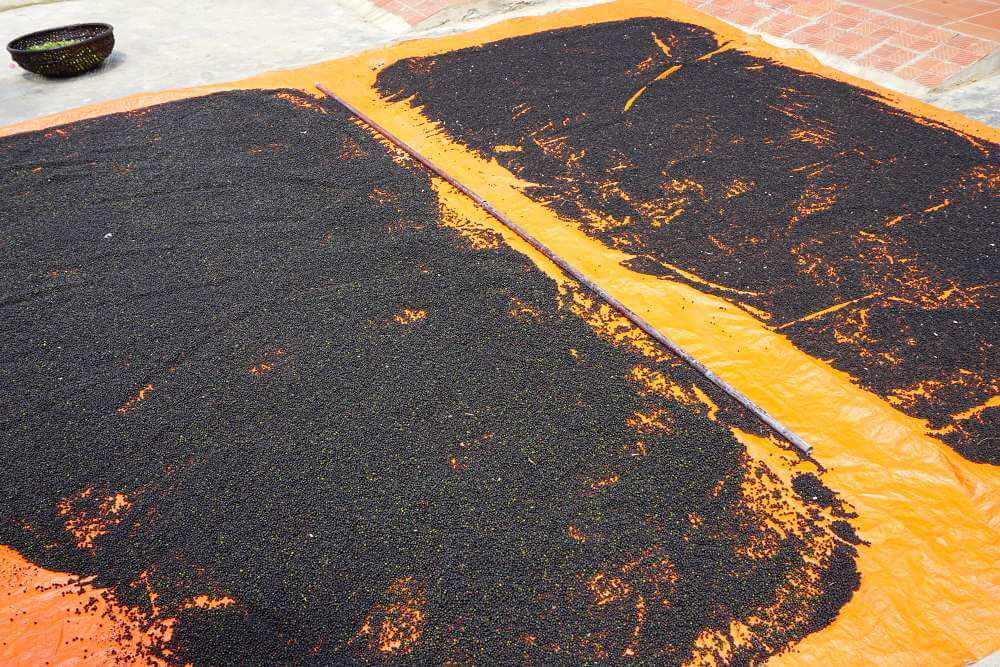
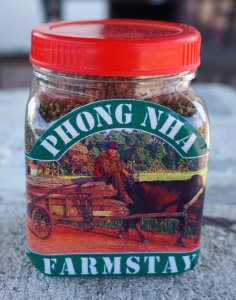
When the drying process is complete, the peppercorns are packed into jars and labeled for sale to Farmstay visitors.
We had heard good things about Phong Nha black pepper, and Melanie had hoped we might find some for sale during our trip. Little did she know we’d be staying right at the source.
Read more about our visit to Phong Nha including our day trips to the local caves.
